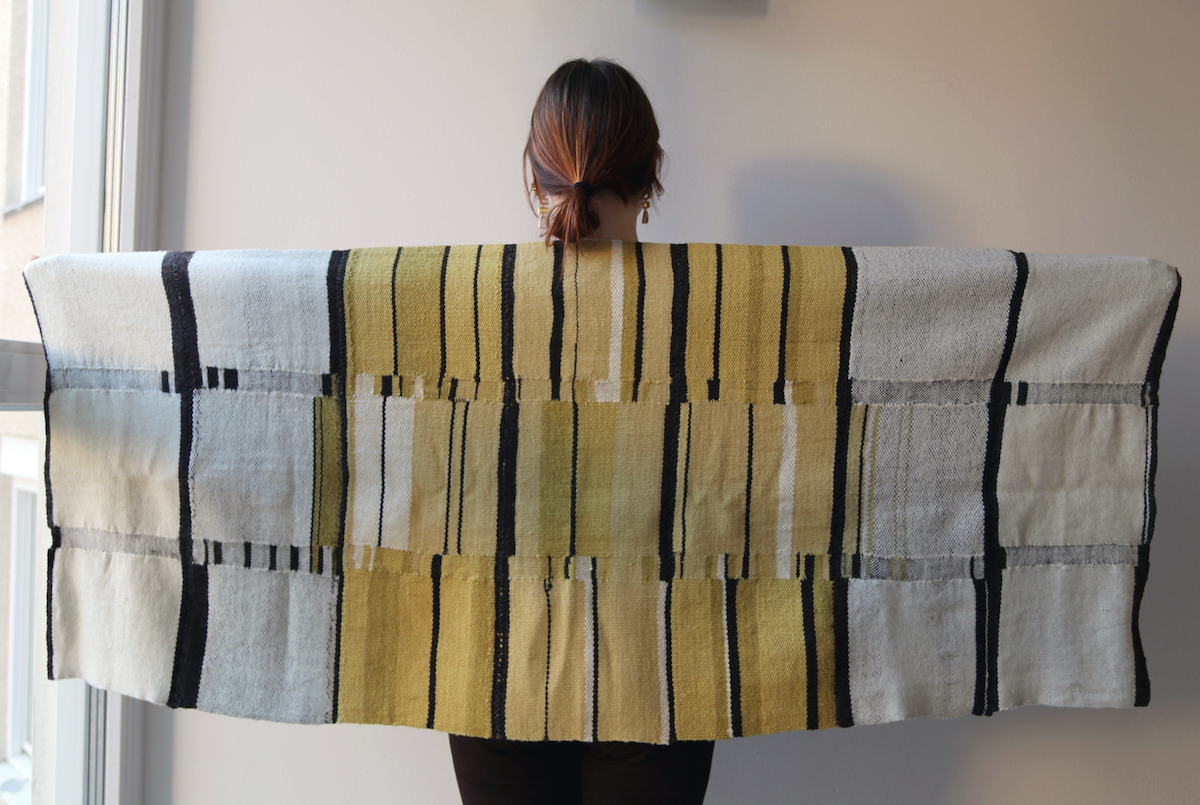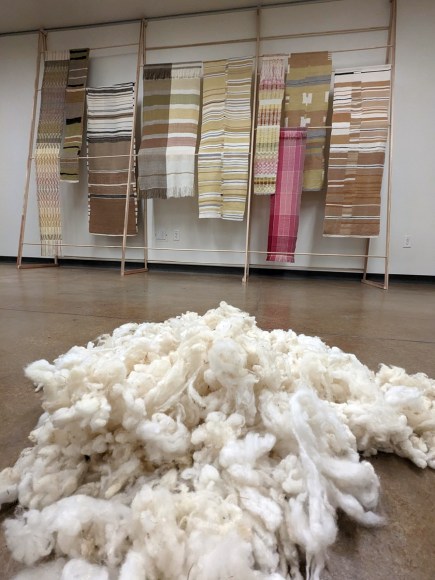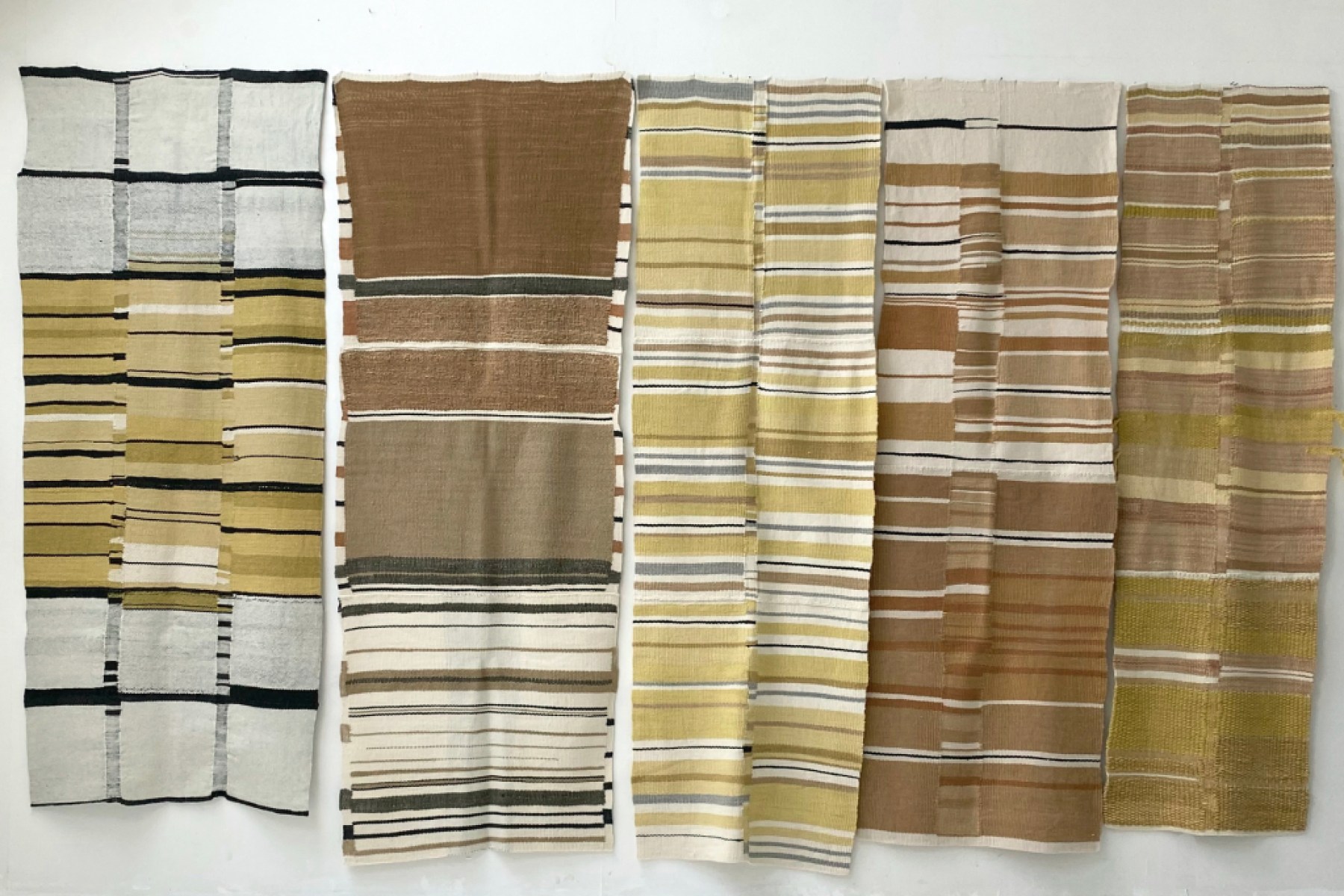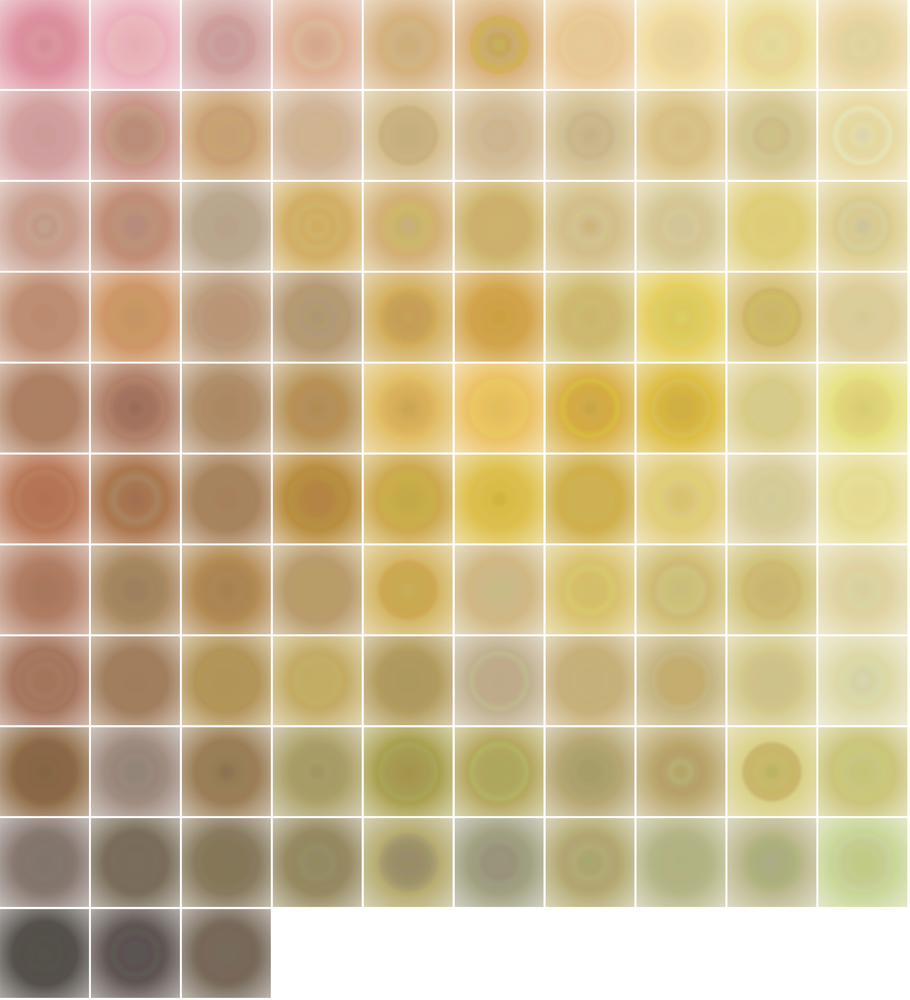Exploring Ecological Entanglements at Santa Barbara Botanic Garden
Exhibit Probes Relationship Between Humans, Plants, and Color

The visual impact of textile art creatively combines with an environmental message about non-native plants introduced to Santa Cruz Island over the years in a new exhibit on view at the Santa Barbara Botanic Garden. Interlopings: Colors in the Warp and Weft of Ecological Entanglements by artists Helén Svensson and Lisa Jevbratt is a process-based, site-specific collaborative art project combining the traditional techniques of wool dyeing, spinning, and weaving with data visualization.

Botanic Garden’s Pritzlaff Conservation Center Gallery. Interlopings: Colors in the Warp and Weft of Ecological Entanglements explores the relationships between humans, nature,
and color. | Credit: S.B. Botanic Garden
The resulting weavings all use dyes extracted from non-native plants including fennel (Foeniculum vulgare), sea fig (Carpobrotus chilensis), blue gum (Eucalyptus globulus), and olive (Olea europaea). Also included is a dye produced from an insect that lives on the non-native prickly pear cactus (Opuntia ficus-indica cactus) — cochineal (Dactylopius coccus) — and is used to produce carmine, a reddish dye that has been valued throughout the centuries.
Even the sheep that the wool and yarns were gleaned from have a historical connection to Santa Cruz Island. The breed, now called Santa Cruz Island sheep, is believed to have been brought to the island in the mid-19th century for wool and meat production. Eventually becoming feral, they caused so much damage to the landscape that they were removed from the island, according to a statement from the Botanic Garden.
“Santa Cruz Island is undergoing an intensive ecological restoration process. The project explores perceptions of ‘invasive species’ and aims to complicate questions regarding who and what belongs on that island and by extension on any island, real or imagined,” said Jevbratt, who is a professor of art at UC Santa Barbara.
“We are investigating the complex and intertwined influence humans have on our ecosystems, and the aesthetic, emotional, magical, and medicinal interrelationships between humans, plants and color,” said Jevbratt.
Interlopings: Colors in the Warp and Weft of Ecological Entanglements is on view at Santa Barbara Botanic Garden’s Pritzlaff Conservation Center Gallery through March 12. Advance reservations are required for non-Garden members and can be made at sbbotanicgarden.org/visit.
Support the Santa Barbara Independent through a long-term or a single contribution.






You must be logged in to post a comment.